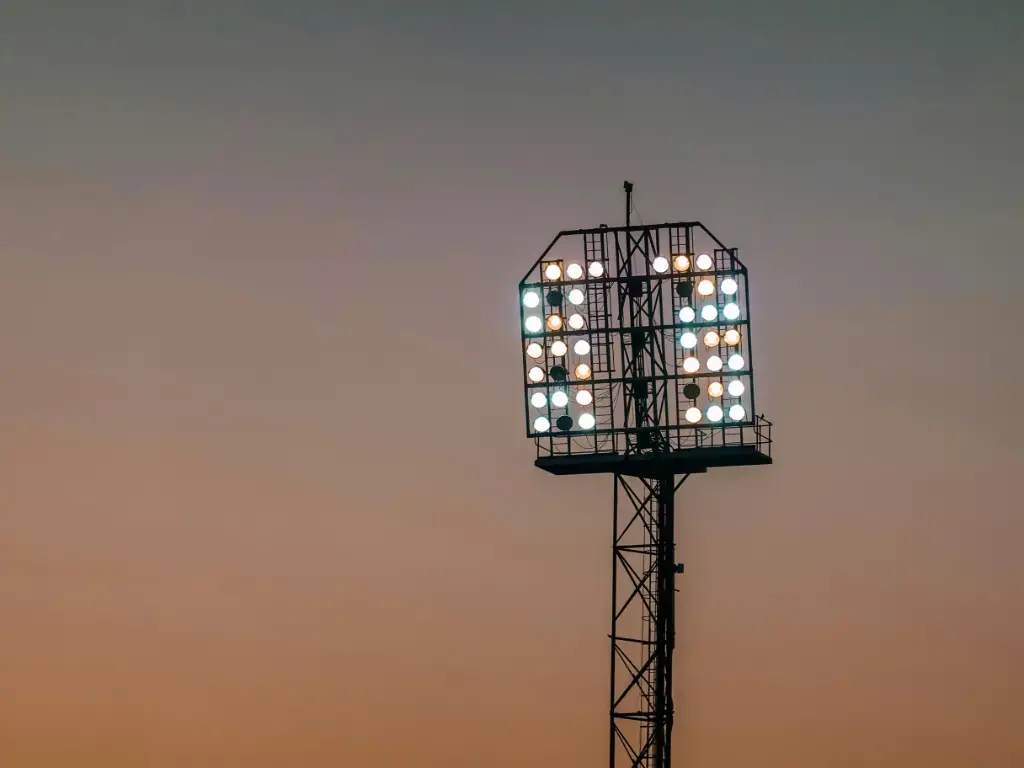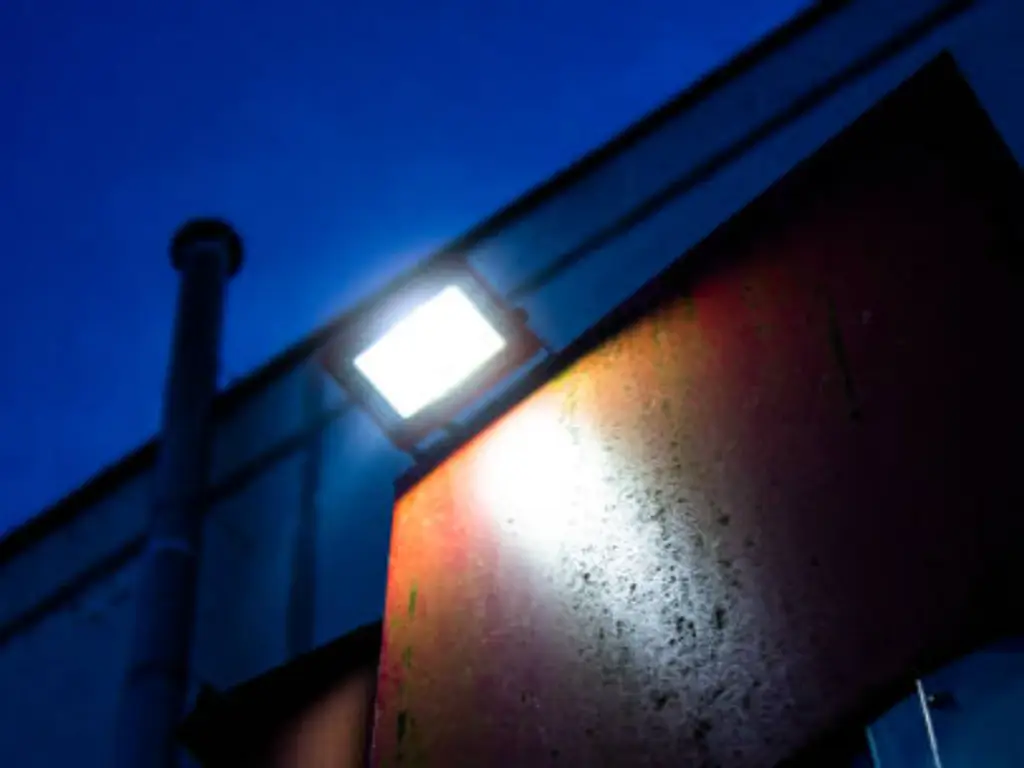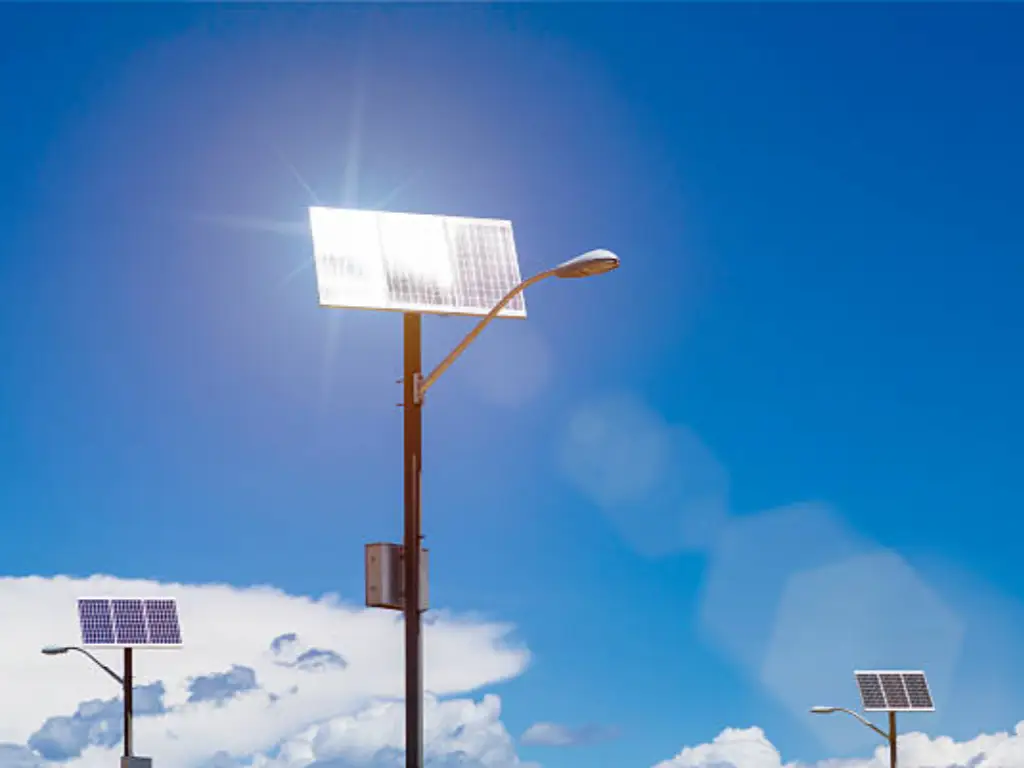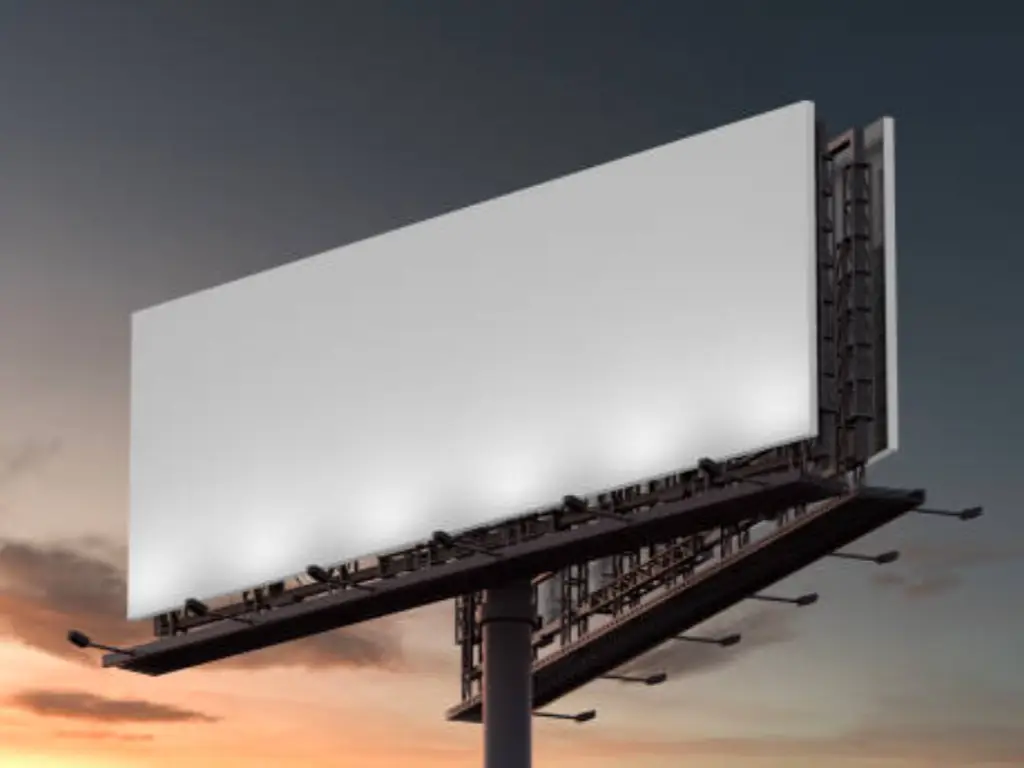Few people can recall the last time an urban or industrial area was devoid of light. Light, in its many forms, supports safety and productivity while enhancing beauty and aesthetics. Out of the multitude of illumination devices, flood lights possess the ability to cover expansive areas as they are some of the most rugged and durable tools of illumination due to their wide intense beams. Facility managers, security directors, and even event organizers will greatly benefit from understanding how these lights function and their myriad applications. This guide contrasts flood lights with other similar luminaires, highlights their importance in commercial and industrial settings, and also explains the many principles behind their optimal selection and deployment.
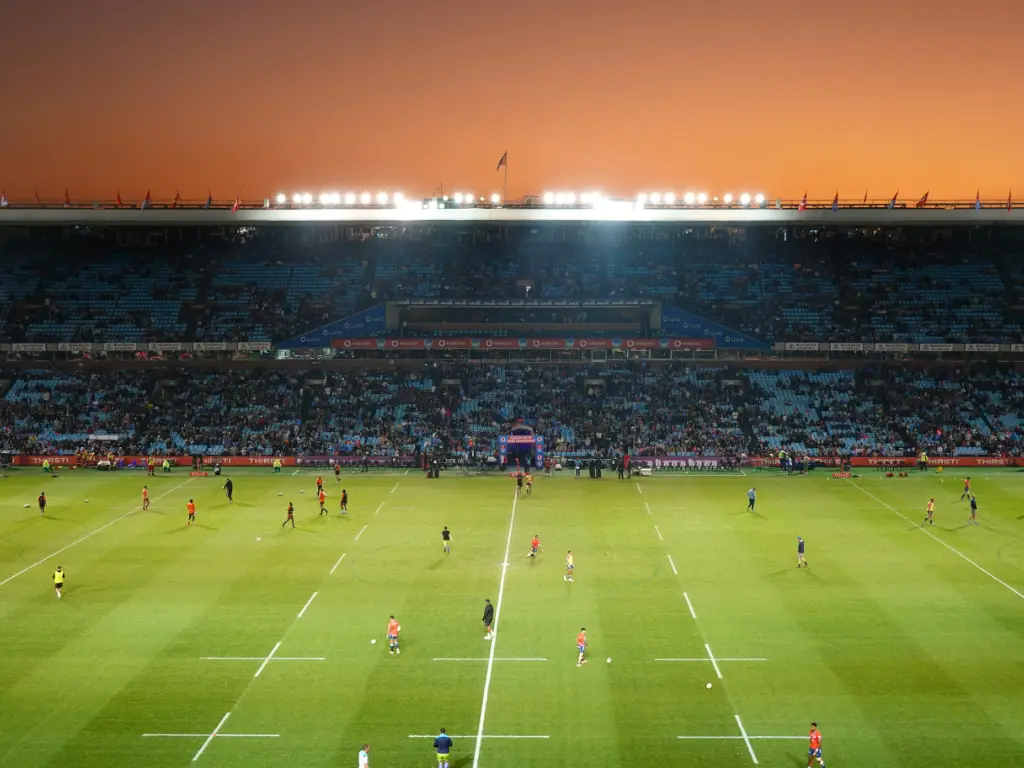
Flood Lights Defined: Broadening Your Perspective
As a specific category of outdoor lighting, a flood light is designed to provide powerful illumination over a wide area with artificial lights. Unlike focused light sources, it does not aim at illuminating a point; rather, it seeks to achieve general lighting over broad spaces. The term “flood” in “flood light” connotes an outpouring; light inundates an area much like a flood of water inundates a flat surface, covering every contour.
The coverage is achieved through a wide beam angle of 45 to 120 degrees. This angle offers flexibility from narrow to wide light distribution, ranging from contained floods to broad washes. Therefore, flood lights are very powerful as a result of their design intentions, providing intense illumination for various applications. Because they need to disperse light across large areas, flood lights need to generate excessive light. This is especially important when ambient light is limited or absent, such as in outdoor spaces. Furthermore, the greater the high lumen output, the greater the command the fixture has over darkness in the illuminated domain.
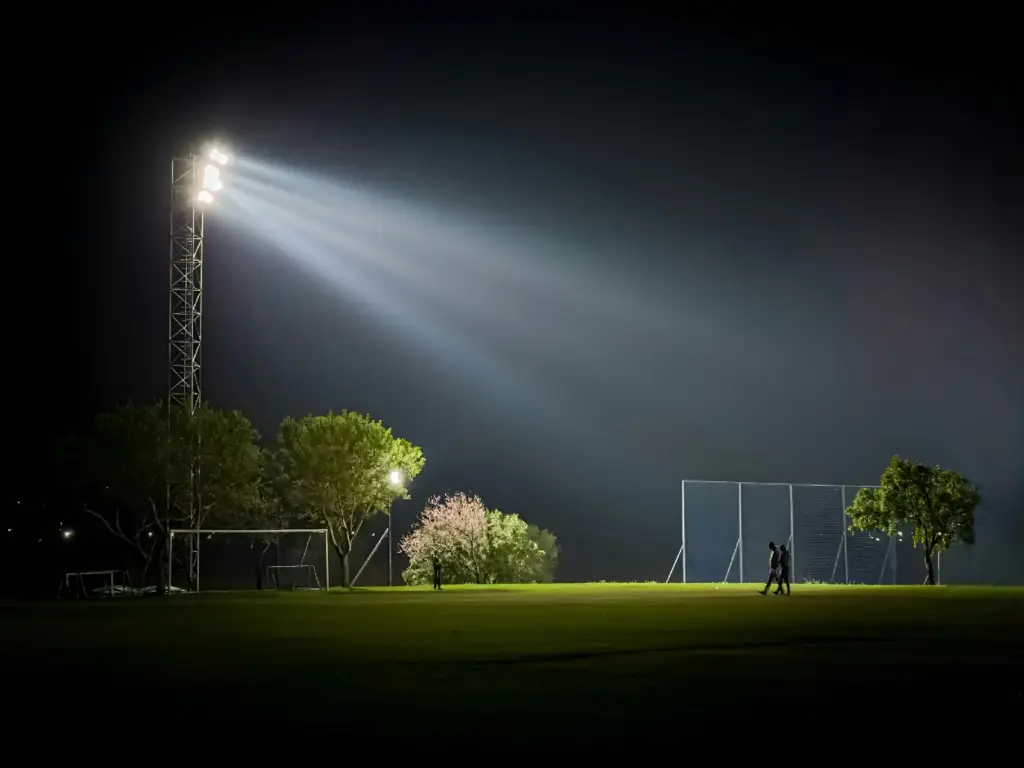
Spotlight vs. Floodlight
While both spotlights and flood lights serve the same purpose of illuminating an area, they do so in completely different ways. One is as a painter’s roller while the other is as a surgeon’s scalpel, one being precise and the other being broad.
A spotlight’s beam is emitted as a concentrated narrow light cone with a maximum of 45 degrees angle. This focused beam serves to accent attention to identify objects, mark features, or cue important parts. For intense and localized light, or for creating superb visual emphasis, a spotlight works best. Think of a gallery or a stage, a spotlight is best fit for soloists or sculptures to behold the attention of the audience.
In contrast, a flood light strays the light it emits much wider and engulfs a larger area compared to its spotlight counterpart. Flood lights aim to illuminate an entire area by removing any existing shadows and improving visibility. Knowing the these differences for any effective lighting strategy is key to having the right tool for the job.
Below is a summary of their key defining features and elements:
| Feature | Flood Light | Spotlight |
| Beam Width | Wide (typically 45°-120°), designed for expansive coverage. | Narrow (typically ≤ 45°), designed for focused illumination. |
| Coverage Area | Illuminates large, sweeping areas, providing ambient or uniform light. | Concentrates light on small, specific points or objects. |
| Light Intensity | Produces a softer, more diffused light across a wider area; high overall lumen output for broad illumination. | Creates a highly intense, bright beam in a confined area; lumens are concentrated for piercing brightness. |
| Primary Purpose | General lighting, security lighting, area illumination, and widespread safety enhancement. | Accent lighting, highlighting specific elements, creating dramatic effects, or providing targeted task lighting. |
| Typical Use Cases | Parking lots, sports stadiums, warehouse interiors, building facades, large outdoor spaces, general public spaces illumination. | Art displays, flagpoles, signage, storefront windows, landscaping elements, specific points on stages, long-distance accentuation of architectural details, providing focused light for intricate work. |
If continuous area lighting is required, the flood light is best. If pinpoint accurate illumination is required, the spotlight is the only option. They are frequently used together as a basis for complex lighting strategies that require both broad transparency and sharp focus.
Top Commercial & Industrial Applications
In factories, shipping yards, and busy retail centers, good lighting is more than a detail; it keeps people safe, speeds up the workday, and sometimes protects the gear itself. That wide sweep from a single flood light lets crews see what theyre doing without squinting.
- Robust Security & Perimeter Defense: Security guards and surveillance cameras love the way flood lights punch through darkness along outer fence lines or in open storage lots. The sheer brightness makes it obvious that intruders are being watched, and many systems piggyback on that light to record sharper, clearer footage. This outdoor security lighting forms a vital first line of defense.
- High-Performance Sports & Arena Illumination: Fans and spectators expect perfect sightlines when the home team takes the field, and stadium flood lights deliver late-afternoon glare-free visibility. Referees benefit, players benefit, and the crowd, no longer straining, simply enjoys the show.
- Optimizing Industrial & Commercial Operations: Back inside a warehouse the story stays the same; constant illumination allows fork-lift drivers to slide pallets onto shelves without hesitation. Maintenance crews use the same lights at night and appreciate that they dont have to guess where the machines end and the aisles begin.
- Strategic Architectural & Corporate Campus Accentuation: Flood lights elevate corporate aesthetics by highlighting architectural features, buildings, and signage. This enhances brand visibility, fosters a welcoming atmosphere, and adds to commercial property prestige, serving both functional and decorative purposes.
- Critical Outdoor Event & Construction Site Lighting: For large temporary commercial operations like construction sites or trade shows, outdoor flood lights deliver essential illumination for worker safety and good visibility during extended work hours in public spaces.
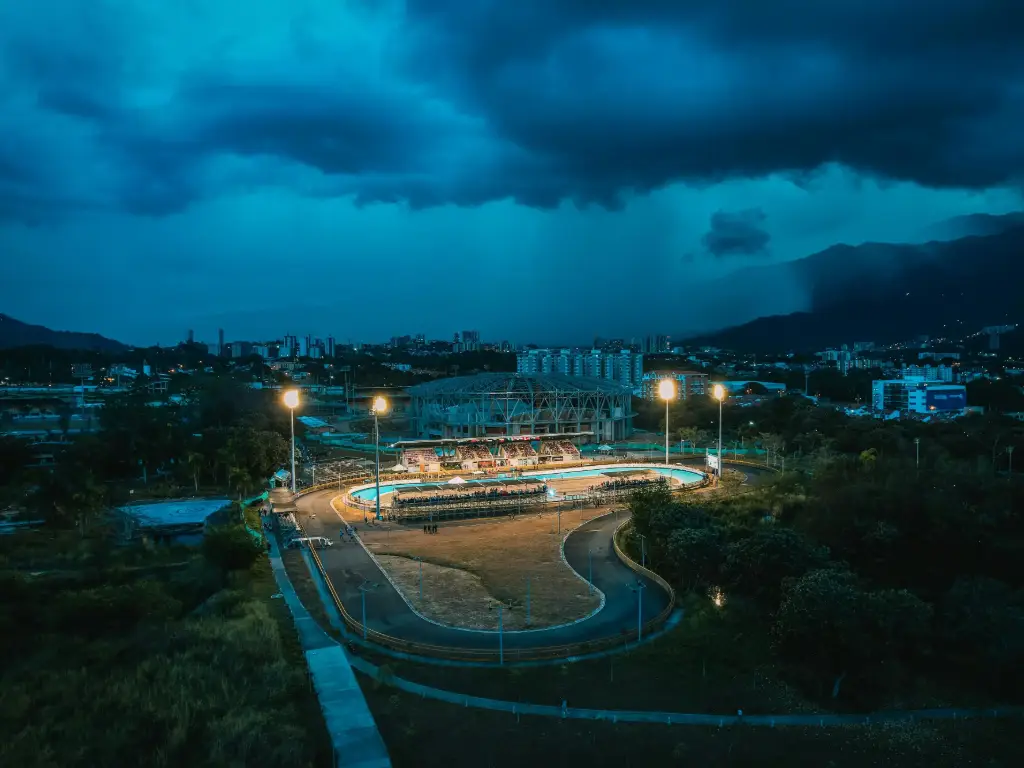
Choosing Your Flood Light: Key Factors
Picking the right floodlight for your commercial or industrial space is a strategic investment. This section serves as your comprehensive buying guide, dissecting the critical factors that will empower you to make an informed decision and select the optimal lighting solution tailored to your specific needs and long-term cost efficiencies.
- Illuminance (Lux/Foot-candles) & TCO: Focus on illuminance (light on surface) for precise needs, not just raw lumens. High-power floodlights are essential for vast areas. Prioritize Total Cost of Ownership (TCO), as energy-efficient LEDs provide significant long-term savings due to their longer lifespan and reduced energy consumption.
- Color Temperature (CCT): Choose Cool White (5000K-6500K) for industrial tasks (enhancing alertness/contrast) or Natural White (4000K) for general outdoor areas (balanced visibility), as it directly affects the color of the light produced.
- IP & IK Ratings: Durability: An IP65 or IP66 rating is crucial for harsh weather conditions. Consider IK (Impact Protection) (IK08/IK10) for ruggedized industrial-grade floodlights in high-risk zones.
- CRI (Color Rendering Index): A CRI of 80 or higher is important for tasks where accurate color recognition is critical, like quality control.
- Advanced Controls & Energy Management: Incorporate smart floodlights with photocells and motion sensors for dynamic illumination, operational savings, and extended longer lifespan. This defines a category designed for intelligent security purposes and efficiency.

LED Flood Lights: The WOSEN Advantage
LED technology has quietly upended the way we think about light. The new source burns cooler, starts the moment you flick the switch, and sips electricity compared to old-school halogen bulbs.
Expansive Product Line & Tailored Solutions: WOSEN provides a comprehensive range of LED flood lights from 100W to 1000W+, with various beam angles, color temperatures, and IP ratings to precisely meet diverse project demands. The in-house R&D crew listens, tweaks optics and housing, and turns OEM blueprints into working prototypes inside weeks.
Uncompromising Quality & Reliability: WOSEN relies on top-quality LED chips from Philips Lumileds, OSRAM, Cree, and Nichia, as well as strong power drivers from Meanwell and Inventronics. This ensures exceptionally high luminous efficacy (up to 170lm/W), consistent performance, and extended product life, minimizing maintenance costs and lowering electricity bills. Smart heat sinks stop the fixture from gasping for air when the afternoon sun lands.
Built for Extreme Durability: Steel housings earn cheeky IK ratings and seal glass gaskets flirt with IP numbers that most engineers leave in the spec sheet. Even a 17-grade hurricane won’t rattle these flood lights if the mounting bolts are snug. WOSEN designs outdoor flood lights, specifically built for outdoor use, with superior durability, boasting high IP and IK ratings, and resistance to severe forces.
Global Compliance & Project Expertise: Paperwork never sleeps on a global job.CE, RoHS, UL, ETL, ENEC—you can browse the tabs while waiting for the freight truck. Lighting designers get a free Dialux simulation, so illustration, not guesswork, drives the final layout.
Exceptional Customer Support & Efficiency: WOSEN backs products with up to 5-7 year warranties, 30 years in the business and a streamlined production line let the team ship orders faster than most. The company adds an entire support ecosystem, acting more like a dependable partner than just a vendor.
FAQs About Flood Lights
Here are concise answers to common questions about flood lights:
- Q: How long do flood lights typically last?
A: LED flood lights usually last much longer, up to 100,000 hours, while traditional halogen flood lights only last 2,000 to 20,000 hours. This demonstrates their significant longer lifespan.
- Q: What are some ways I can reduce glare from flood lights, especially for large installations?
A: Avoid glare by angling the light downward, using shielding, appropriate mounting height, and use warmer color temperatures to reduce light harshness.
- Q: For commercial usage, is it possible to dim LED flood lights? And why is this feature useful?
A: The majority of LED flood lights are now dimmable. This enhancement not only improves energy efficiency but also increases lifespan. The ability to adjust light levels based on need is a definite plus.
- Q: What are some best practices for installing and maintaining floodlights in an industrial setting?
A: Never forget safety: Always turn off power. Choose mounting options (walls, poles, ground stakes) according to the area’s size and application. Position lights properly to avoid light waste while achieving even coverage to reduce light pollution. For maintenance, safely remove lens dirt build up after power shutoff. Ensure wiring and housing is not weather worn for IP rating compliance, and schedule lens cleaning for dirt build up maintenance.
- Q: What are the key differences between photocells and motion sensors on flood lights, and which one is better for commercial security?
A: Photocells (dusk-to-dawn) activate by ambient light to turn the light on and off. A motion sensor turns the light on when it detects movement. For commercial security uses, a combination works best: photocells for general lighting and motion sensors for strategic alert notifications aimed at snapping back potential intruders.
